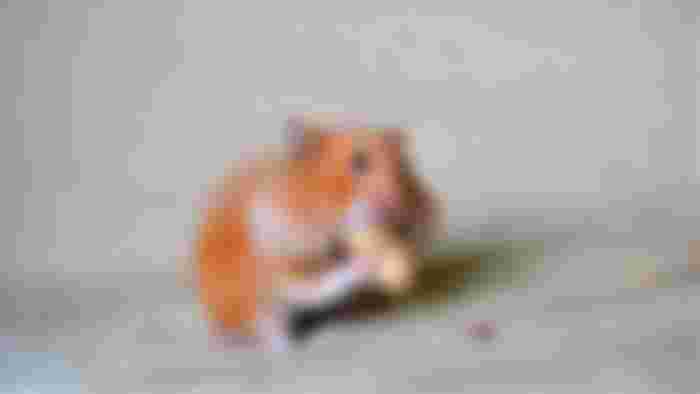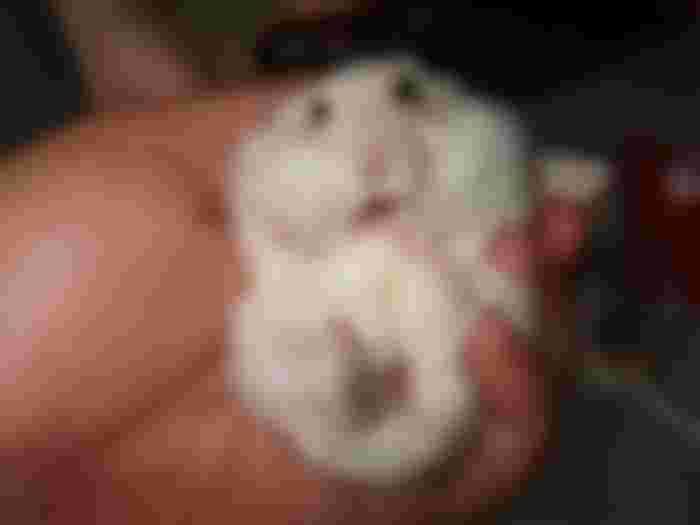Hamsters are rodents (order Rodentia) belonging to the subfamily Cricetinae, which contains 19 species classified in seven genera.[1][2] They have become established as popular small house pets.[3] The best-known species of hamster is the golden or Syrian hamster (Mesocricetus auratus), which is the type most commonly kept as pets. Other hamster species commonly kept as pets are the three species of dwarf hamster, Campbell's dwarf hamster (Phodopus campbelli), the winter white dwarf hamster (Phodopus sungorus) and the Roborovski hamster (Phodopus roborovskii).

Hamsters are more crepuscular than nocturnal and, in the wild, remain underground during the day to avoid being caught by predators. They feed primarily on seeds, fruits, and vegetation, and will occasionally eat burrowing insects.[4] Physically, they are stout-bodied with distinguishing features that include elongated cheek pouches extending to their shoulders, which they use to carry food back to their burrows, as well as a short tail and fur-covered feet.

Taxonomists generally disagree about the most appropriate placement of the subfamily Cricetinae within the superfamily Muroidea. Some place it in a family Cricetidae that also includes voles, lemmings, and New World rats and mice; others group all these into a large family called Muridae. Their evolutionary history is recorded by 15 extinct fossil genera and extends back 11.2 million to 16.4 million years to the Middle Miocene Epoch in Europe and North Africa; in Asia it extends 6 million to 11 million years. Four of the seven living genera include extinct species. One extinct hamster of Cricetus, for example, lived in North Africa during the Middle Miocene, but the only extant member of that genus is the European or common hamster of Eurasia.
Subfamily Cricetinae
Genus Allocricetulus
Species A. curtatus—Mongolian hamster
Species A. eversmanni—Eversmann's or Kazakh hamster
Genus Cansumys
Species C. canus—Gansu hamster
Genus Cricetulus
Species C. alticola—Tibetan dwarf or Ladak hamster
Species C. barabensis, including "C. pseudogriseus" and "C. obscurus"—Chinese striped hamster, also called Chinese hamster; striped dwarf hamster.
Species C. griseus—Chinese (dwarf) hamster, also called rat hamster
Species C. kamensis—Kam dwarf hamster or Tibetan hamster
Species C. longicaudatus—long-tailed dwarf hamster
Species C. migratorius—grey dwarf hamster, Armenian hamster, migratory grey hamster; grey hamster; migratory hamster
Species C. sokolovi—Sokolov's dwarf hamster
Genus Cricetus
Species C. cricetus—European hamster, also called common hamster or black-bellied field hamster
Genus Mesocricetus—golden hamsters
Species M. auratus—golden or Syrian hamster
Species M. brandti—Turkish hamster, also called Brandt's hamster; Azerbaijani hamster
Species M. newtoni—Romanian hamster
Species M. raddei—Ciscaucasian hamster
Genus Phodopus—dwarf hamsters
Species P. campbelli—Campbell's dwarf hamster
Species P. roborovskii—Roborovski hamster
Species P. sungorus—Djungarian hamster or winter-white Russian dwarf hamster
Genus Tscherskia
Species T. triton—greater long-tailed hamster, also called Korean hamster

For more informative articles subscribe and comment below....!


